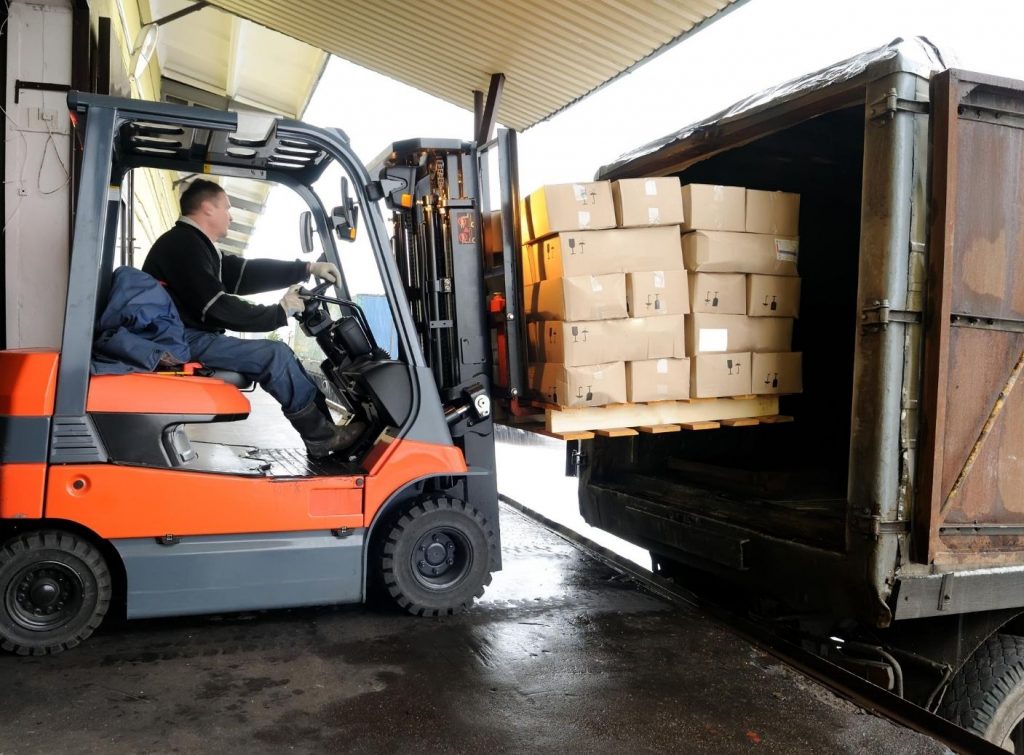No products in the cart.
Forklift Safety, Forklift Training
Understanding Forklift Load Capacity

Improper loading with a forklift is very dangerous in the workplace. If an operator has trouble understanding forklift load capacity, they shouldn’t get behind the wheel. To refresh the minds of forklift operators and help educate operators-in-training, we put together this guide to forklift load capacity and its importance.
Finding the Load Capacity
It’s not always in the same place, but somewhere at the front end of all forklifts is a data plate. Data plates provide a wide range of information, including the maximum load capacity of the truck. Not all forklifts are the same, so even seasoned forklift operators should seek out this information when working with a new truck.
How Forklifts Handle Loads
Forklift counterweights keep the truck stable during daily operations. An internal combustion forklift will use a normal counterweight, but in the case of an electric forklift, the battery will act as a counterweight. If necessary, a counterweight other than the battery can be securely placed near the rear of the forklift.
Furthermore, to keep the truck stable, the load’s center of gravity must be taken into consideration as to how it will affect the stability load triangle. All forklift operators should learn about this topic during training, as well as what the load center is and how it affects the load capacity.
Many forklift operators calculate the center of gravity using a 24-inch load center, but this is not always the case. For example, if a forklift has 5-foot forks, the operator must base the center of gravity off a 30-inch load or half the length of the 5-foot forks. This means that operators must base a 24-inch load center off 4-foot forks.
Laying a box vertically instead of horizontally can even affect the load center. The larger the load center, the smaller the forklift’s load capacity will be. Depending on the load center on the data plate, forklift manufacturers will sometimes label different carrying capacities, though not always.
Attachments and Load Capacity
The forklift’s load capacity is only calculated by the manufacturer and is specifically based on the specs of the attachments. The manufacturer will calculate the load capacity based on the specific lift it will be regularly used on. That being said, if a forklift receives modifications after the initial sale, the owner must consult the original manufacturer to determine a new net capacity. The net capacity takes all attachments and modifications into account to provide the overall load capacity of the truck. After making these calculations, a new data tag must be promptly attached to the forklift. If multiple attachments are on the forklift, each one needs a data tag.
How to Avoid Improper Loading
To keep the forklift stable when loading, there are two things to consider. First, operators must ensure the weight distribution balances evenly across the forks. Second, operators must handle the load with care when taking it from point A to point B. Poor maneuvering or loading will make the truck unstable. It may topple, cause property damage, or injure the operator or nearby pedestrians.
As made evident by these factors, understanding forklift load capacity isn’t as simple as reading the data plate. This is certainly an important factor, but operators also need to carry out proper loading and handling techniques. They must account for any attachments and modifications made to the truck after the initial purchase as well. At First Quality Forklift Training, we help all operators-in-training with a wide range of lift education, including MEWP training and Genie boom training.

